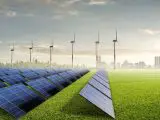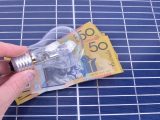
Sojitz to send Australian-made green hydrogen to Palau demonstration project
January 17, 2022The Japanese trading house will purchase and transport the renewable H2 for use in backup fuel cells.
Sojitz Corp (TYO stock symbol 2768) recently announced that it would be conducting a demonstration project in Palau that will involve Australian-made green hydrogen transported to Palau for use in small fuel cells that will be used as backup power for H2-powered vessels.
The renewable H2 will be produced in Queensland powered by electricity from local solar farms.
The Japanese trading house will be working with CS Energy Ltd, an Australian power generator, as well as Nippon Engineering Consultants Co Ltd. from Japan. Together, they will use solar energy in Queensland, Australia to produce green hydrogen. That H2 will be transported to Palau, a Pacific Island nation, with funding support from the Japanese environment ministry.
Sojitz will be responsible for the project management and for supporting the equipment installation. On the other hand, CS Energy will provide the renewable H2. Nippon Engineering’s role will be in studying H2 applications and demand, as well as the economic feasibility of the zero carbon-emission fuel in marine transport.

The green hydrogen projects will start shortly and will continue to operate through March 2024.
According to a spokesperson from Sojitz cited in a Reuters report, there remain certain details which will be determined at a later date, such as the type of H2 carrier to be used and the maritime route to be followed. The site in Queensland was selected as the top location for renewable H2 production due to the land availability as well as the high solar radiation levels. This makes it possible to produce and export the H2 at a minimal cost, explained a statement from the company.
Palau currently maintains a heavy dependence on fossil fuels to meet its energy needs. That said, the Pacific Island country has set a 2025 target of using 45 percent renewable energy as a part of its decarbonization efforts.
The project primarily targets the conversion of marine vessels powered by gasoline into vessels powered by green hydrogen. It will also involve the implementation of fuel cells to replace diesel fuel as sources of backup power.



 With over 15 years of reporting hydrogen news, we are your premier source for the latest updates and insights in hydrogen and renewable energy.
With over 15 years of reporting hydrogen news, we are your premier source for the latest updates and insights in hydrogen and renewable energy.